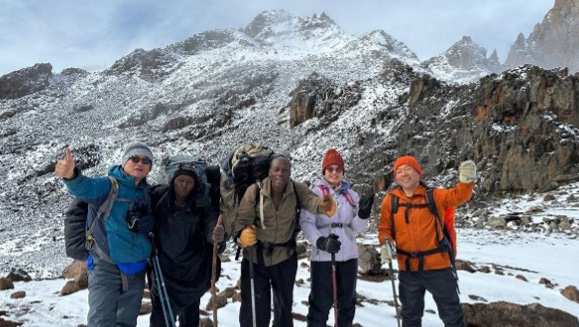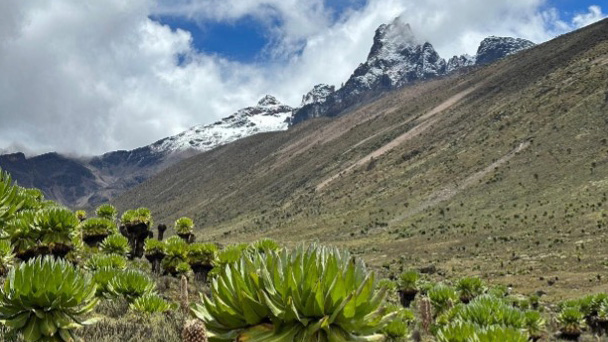"There's a mountain in a country right on the equator where it snows"—can you believe it? Just a few hours' drive from Nairobi, Mount Kenya, Africa's second-highest peak, stands tall. With an elevation of 5,199 meters (the hikble peak is Point Lenana at 4,985 meters), it can typically be hikeed in 3 to 5 days, and even beginners can take on the challenge with a porter guide. This time, I took on a course that allowed me to experience two routes: the Chogoria Route, known for its beautiful scenery, for the ascent, and the Sirimon Route for the descent.
Day 1: A Rainy Welcome and a Soaked Start of the Hike The journey began on November 3rd, departing Nairobi at 6 AM and heading to the town of Chogoria, the starting point of the hike. At an altitude of around 2,000 meters, we had lunch in this town before moving by car to the entrance of the forest area. However, the weather was unfortunately rainy. The two-hour trek to our first destination, Meru Bandas (elevation 2,950m), was a trial of trudging through muddy paths. Our plan to camp was quickly changed to staying in local bungalows, where we dried our wet clothes and shoes by the fireplace. "If it rains tomorrow, should we abandon the hike?" Such conversations were whispered among us due to the conditions.

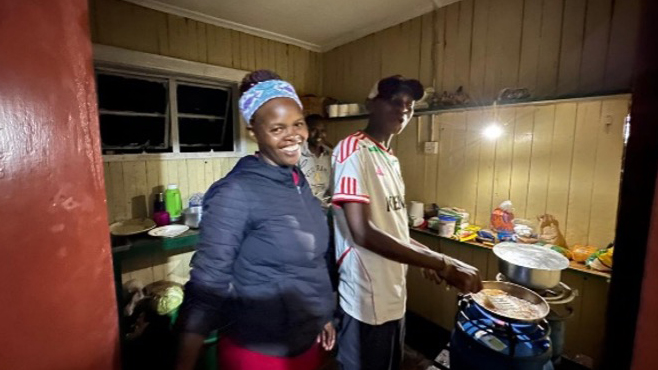
Day 2: To the Spectacular Lake Ellis The next morning, the sky cleared up completely! We resumed the hike with renewed spirits, aiming for Lake Ellis (elevation 3,650m). Along the way, the river had swollen due to the previous day's rain, leading to an adventure of crossing it barefoot. As the altitude increased, the air thinned, and the scenery transformed from jungle to a world of alpine plants. The view of Lake Ellis spread out before us was truly a "reward," instantly wiping away the fatigue of the hike. Here, the chef accompanying us caught rainbow trout in the lake, which we enjoyed for dinner. Fresh fish on the mountain—unforgettable.
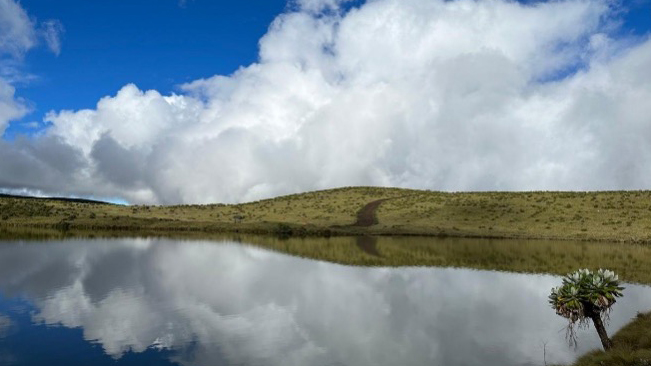
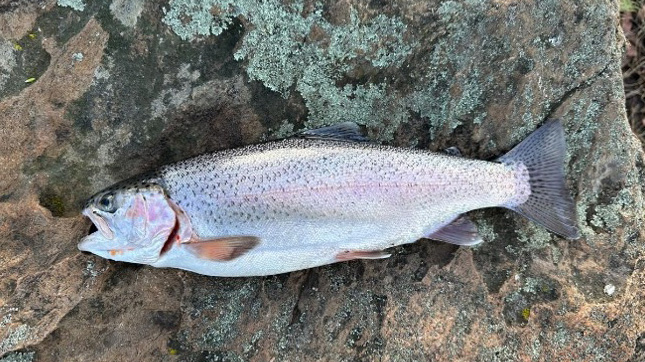
Day 3: To 4200m. Heavy Rain, Numbness, and Signs of Snow The day's destination was Mintos Hut (4,200m). Although we started in clear weather, it gradually deteriorated. The river was even more wider than the previous day, with points where we barely managed to leap over. Fortunately, the altitude sickness medication was effective, resulting in only mild numbness in my hands and feet (a side effect of the medication). However, the last two hours were a relentless hike in the midst of the pouring rain. Finally reaching Mintos Hut, the summit appeared faintly snow-capped through the clouds. Snow flurries began at night, prompting a meeting among the porters about the feasibility of the next day's hike. We also conveyed, "Please prioritize safety in your decision."
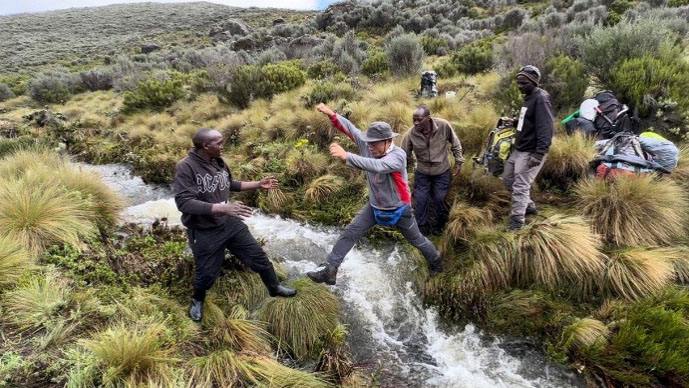
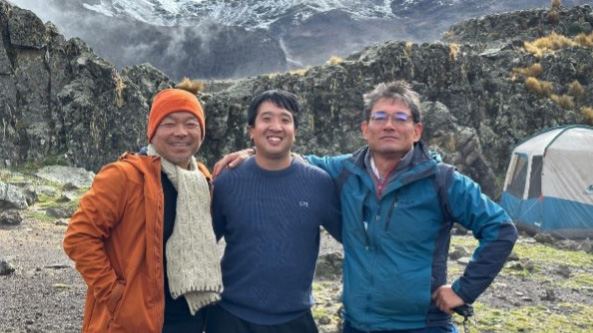
Final Day: Hike Abandoned but Astonished by "Snowy Mount Kenya" At the scheduled hike time of 2 AM, the porters informed us, "Due to heavy snow, departure will be delayed." We eventually set off at 5 AM. Stepping out of the tent, we were greeted by a 360-degree snowy landscape! Despite the surprise, the tour leader announced, "For safety reasons, the hike to Point Lenana is canceled." Disappointed... but then we were told, "There's a scenic point on the detour to the Sirimon Route," so we set off with renewed spirits. However, this descent route was actually tougher than the ascent. The snow made the path muddy and slippery, and for some reason, the descent involved continuous hiking. "Isn't descending supposed to be downhill?" we joked, but there was no room for laughter as our legs were shaking. A porter mentioned, "There was a slip accident with another party recently," which heightened the tension. Ultimately, we took a challenging route involving a lateral move after hiking to nearly 4,600 meters near the target point. The descent was completed at 7 PM, using unexpected time and energy, making it an unforgettable hike.
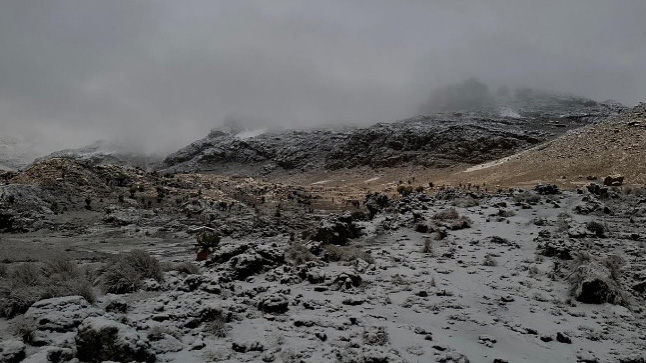
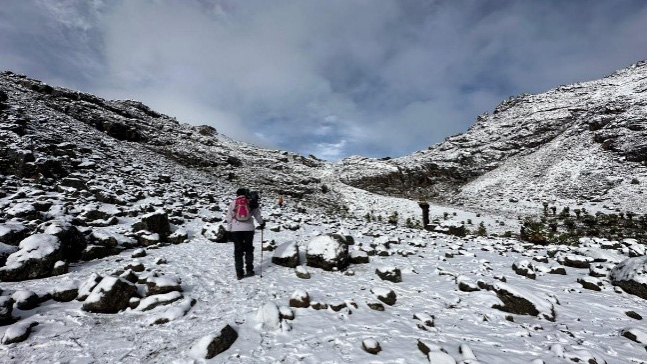
Rainy and Dry Seasons Are Really Important Finally, one thing to convey—"If you're hiking, definitely go during the dry season!!" Kenya has two rainy seasons: the short rains from November to December and the long rains from April to June. The mountain scenery and natural beauty are truly moving, but weather greatly impacts safety. Through this experience, I felt the grandeur and harshness of Africa's nature. Still, Mount Kenya has a charm that makes me want to challenge it again. Next time, I want to take a photo at Point Lenana as the sun rises under clear skies!
